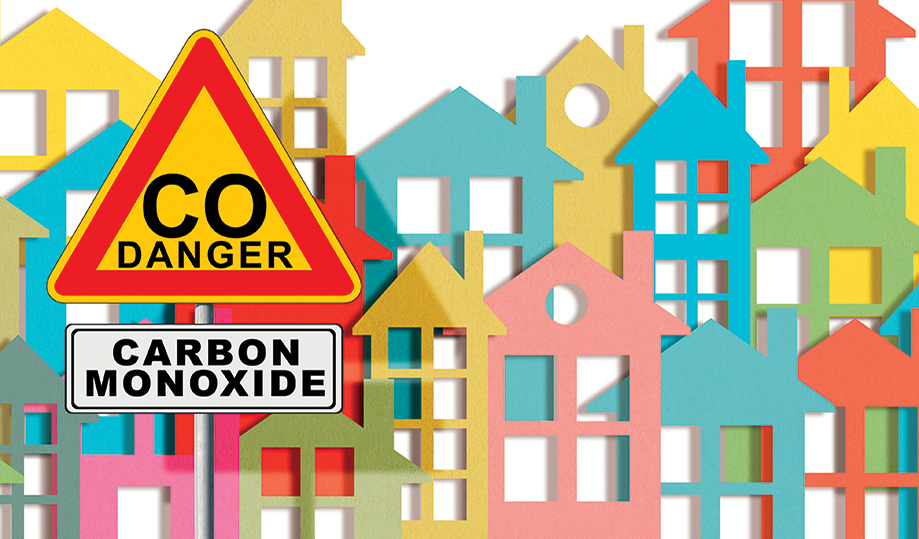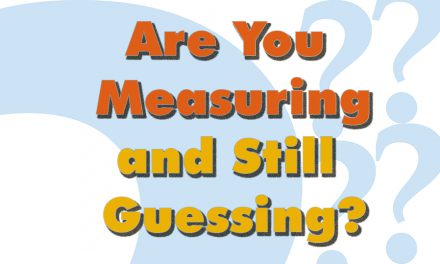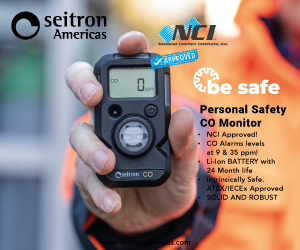In the summer of 2024, I was sitting at my departure gate in the Kansas City airport, waiting for my flight home after a CO (carbon monoxide) conference. As usual, I had my Sensorcon CO monitor clipped onto my backpack. I happened to glance down and froze. It read 58 parts per million.
I snapped a picture of the monitor and texted it to National Comfort Institute (NCI) CEO Dominick Guarino, who had been at the same event and was sitting at his gate at the airport. He texted back a photo of his own Sensorcon reading, which read 60 ppm. CO was in the air all around us.

When we boarded our respective flights, the levels went even higher — over 60 ppm — before the cabin air systems kicked on. Once the plane doors closed and filtration began, the levels dropped back to zero. But here’s the part that stuck with me: none of the gate agents, the airport workers, or anyone in that terminal had any idea what they were breathing. No monitors. No protection. Just business as usual.
If I hadn’t been carrying that monitor, I wouldn’t have known either.
Lessons from the Field
Back in 2005, long before personal CO monitors were widely available, I responded to a routine service call to perform a clean-and-tune on a gas-fired boiler. I had taken Jim Davis’s CO training class back in 1993, and ever since, I have made it my policy to always enter homes with my combustion analyzer already running.
That decision may have saved my life.
As I walked into the house, the CO reading on my analyzer quickly spiked to 150 ppm. I got everyone out of the home immediately, called 911, and had the family sent to the hospital. There wasn’t a single CO alarm in the house — and no one, including me, would have known they were being poisoned if I hadn’t been scanning the air from the start.
That was the worst case I ever encountered, but it wasn’t the only one. Over the years, I’ve walked into dozens of homes with elevated ambient CO levels — often below the threshold where a UL-listed CO alarm would even go off. In many of these homes, people were unknowingly exposed to CO for days or even weeks. And I would’ve been exposed too if I hadn’t taken precautions.

The Stats Don’t Lie
At that same CO conference in Kansas City, I learned about a study commissioned by Underwriters Laboratories (UL). According to their data, 36% of homeowners do not have a CO alarm in their homes. That means more than one in three homes you walk into might be completely unprotected.
Even if a CO alarm is present and functioning, it might not activate until CO levels are dangerously high. We all know the UL-2034 standard allows for significant delays at lower levels of exposure. That’s not good enough. You could be walking into a toxic environment without a clue — unless you’re actively monitoring the air yourself.
Even the Experts Get It Wrong
Let me share another example, one that hits close to home for anyone in HVAC or emergency response.
In August 2024, Cypress Bay High School in Broward County, Florida, was evacuated after several cafeteria workers began feeling sick. They had classic CO symptoms: nausea, dizziness, and headaches. Four school employees were hospitalized. But here’s the kicker: even a firefighter responding to the call had to be hospitalized.
Click Below for the Next Page:













Nice article, can you recommend a personal CO monitor for our techs?
Bill, the Sensorcon (https://sensorcon-sensing-products-by-molex.myshopify.com/) units are excellent. Highly recommended. The Inspector series works great.
Hi Bill!
Sorry for the delay in getting back to you.
I have been using a Seitron personal CO monitor for a few months now and it’s been fine. Every now and then I hit it with CO by holding it over a candle and it hasn’t failed to register.
Sensorcon also has monitors as well and while they are more money, the Industrial Pro model can be refitted with a new sensor every two years.
Hope this helps!